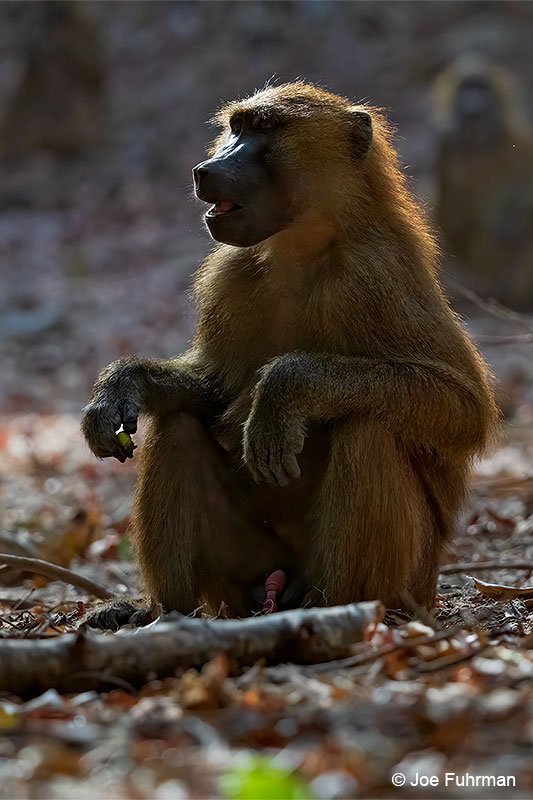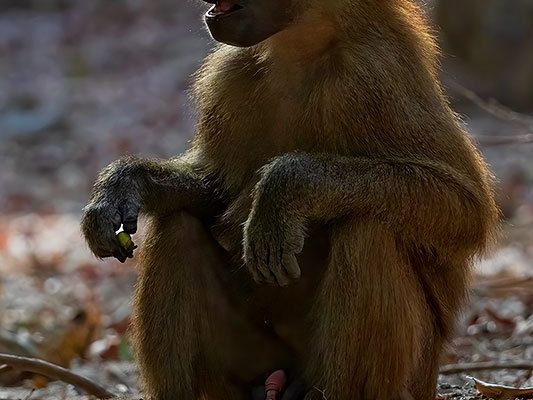
Guinea baboons are fascinating creatures native to parts of Africa. They’re social animals, often seen in large troops, and they can be quite curious. But here’s the deal: while they might look cute from a distance, they can be unpredictable and, at times, aggressive. So, what should you do if one crosses your path? I’ll walk you through it, step by step, like we’re chatting over coffee about a crazy wildlife adventure.
Understanding Guinea Baboons
Guinea baboons are medium-sized primates, typically weighing between 40 to 100 pounds. Their distinctive features include long, dog-like snouts and a thick mane of fur that covers their bodies. They live in a variety of habitats, from savannas to forests, and they’re known for their loud vocalizations that can carry for miles.
You might be wondering about their behavior. Generally, baboons are social animals and often travel in groups. This troop mentality means they can be protective of one another. If you see one baboon, there’s a good chance there are others nearby. Understanding their social structure can help you stay safe.
Interestingly, these primates are omnivorous. They eat everything from fruits and leaves to insects and small animals. So, if you’re venturing into their territory, keep in mind that they might be scavenging for food, too. Respecting their space is important, as it helps keep both you and the baboons safe.
Recognizing Potential Threats
Here’s the thing: not all encounters are created equal. Some baboons might be indifferent to your presence, while others might feel threatened or cornered. If a Guinea baboon perceives you as a threat, you could be in for a tense situation.
A few signs that a baboon might be feeling defensive include vocalizations, aggressive posturing, or direct eye contact. If you notice these behaviors, it’s crucial to stay calm. Remember, you don’t want to provoke them further.
If you find yourself close to a troop, don’t approach them. Instead, step back slowly and keep your eyes on the ground. Sudden movements can startle them, making matters worse. It’s kind of like diffusing a tense situation with a neighbor—sometimes, giving them space is the best approach.
What To Do During An Encounter
So, you’ve spotted a Guinea baboon, and it’s staring right at you. Don’t panic! Here’s a plan to keep yourself safe.
- Stay Calm: Breathe. Panicking can make things worse.
- Do Not Run: Running might trigger their chase instinct.
- Back Away Slowly: Turn your body sideways and slowly retreat.
- Make Yourself Look Smaller: Avoid direct eye contact and crouch down if necessary.
By staying calm and backing away, you’re signaling to the baboon that you’re not a threat. If you’re with a group, keep together; there’s safety in numbers. Baboon troops are often more curious than aggressive, but it’s best to err on the side of caution.
If the baboon approaches, remember to keep your hands visible. Hiding them in your pockets or bags might seem like a good idea, but it can come off as suspicious. Emphasizing non-threatening body language helps communicate your intentions.
What Not To Do
Now that you know what to do, let’s talk about what not to do. Some actions can escalate a situation quickly, and it’s important to be aware of them.
- Don’t Make Sudden Movements: Jerky actions can scare or provoke the baboon.
- Avoid Staring: Direct eye contact can be seen as a threat.
- Don’t Feed Them: This encourages begging and can lead them to associate humans with food.
- Never Corner Them: This can lead to defensive aggression.
Every encounter is unique, but following these guidelines helps you avoid a potential conflict. Remember, baboons are wild animals, and their unpredictability is what makes them fascinating—yet potentially dangerous—creatures.
Understanding Their Behavior
Baboons, including Guinea baboons, communicate with each other through a mix of vocalizations, body language, and facial expressions. Understanding these signals can help you react appropriately.
For instance, baboons might communicate excitement or aggression through loud barks or screams. If you hear this, it could mean that they’re feeling threatened or agitated. Similarly, if a baboon flashes its teeth, that can be a warning sign, not a friendly grin. It’s important to pay attention to their body language, as it can provide valuable insights into their mood.
This communicative nature is essential for their social structure. They rely on their troop for protection and companionship. A baboon might act aggressively if it feels its troop is threatened. So, being aware of their social dynamics can give you clues about your own safety.
When To Seek Help
Most encounters with Guinea baboons end without incident, but it’s important to know when to seek assistance. If you find yourself in a situation where the baboons are blocking your path or displaying aggressive behavior, don’t hesitate to call for help.
Local wildlife authorities or park rangers are trained to handle these situations. They can assess the environment and ensure that both you and the baboons stay safe. When you call for help, explain the situation clearly. Mention your location and any specific behaviors you’ve observed—you’ll provide them with the context they need to assist you effectively.
Having this knowledge can help ease your mind. Encounters with wildlife are unpredictable, but knowing the right steps can help keep everyone safe.
Encountering a Guinea baboon in the wild is a unique experience. While it can be thrilling, it’s important to remember that these animals deserve respect and space. Just like meeting someone who’s a little unpredictable, knowing how to navigate the interaction can lead to a safer outcome.
Keeping calm, understanding their behaviors, and knowing what actions to avoid can make all the difference. And who knows? You might come away with a fascinating story to tell. Wild animals, including Guinea baboons, are a reminder of nature’s beauty and unpredictability, so approach each encounter with curiosity and caution. Safe travels out there!

